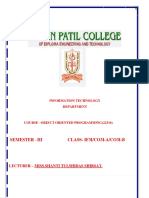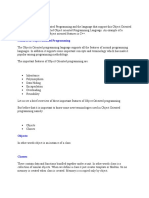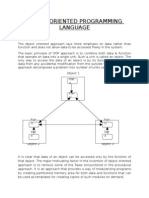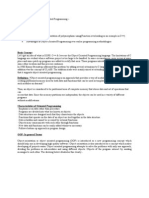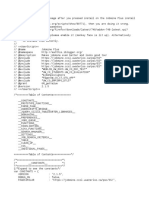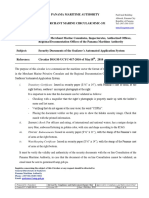OBJECT-ORIENTED PROGRAMMING
Introduction to Object-Oriented Design
History:
Originating in the 1960s, object-oriented design to address the limitations of
procedural programming, focusing on modularity and reusability.
Advantages:
Promotes modularity, flexibility, and code reuse, improving maintainability
and scalability.
Introduction to Object-Oriented Programming Concepts
Classes:
In object-oriented programming, a class is a blueprint for creating objects,
defining their properties and behaviors. It describes what an object will look
like and what it can do.
Example:
�Objects:
In object-oriented programming, an object is an instance of a class that
encapsulates data and behavior. It represents a real-world entity with
properties and actions defined by its class.
Example:
Constructors:
In object-oriented programming, a constructor is a special method used to
initialize new objects. It sets up initial values for object properties when an
instance is created. Constructors have the same name as the class and are
automatically called when an object is instantiated.
Example:
�Destructors:
In object-oriented programming, a destructor is a special method used to
release resources when an object is destroyed. It cleans up tasks like
deallocating memory or closing files. Destructors are automatically called
when an object's lifetime ends.
Data Encapsulation
Definition:
Data encapsulation is the concept of restricting access to an object's
internal state and allowing modifications only through specified methods.
This ensures data integrity and security by hiding implementation details
from the outside world.
Access Modifiers:
�Keywords like private , public and protected controlling member
visibility.
Information Hiding:
Exposing only necessary parts of an object to ensure integrity.
Examples:
Public attributes:
Private attributes:
�Protected attributes:
Const Function:
�A const function guarantees not to modify the object’s state. It's used when
you want to ensure the method doesn't alter any member variables.
Example:
Non-Const Function
A non-const function can modify the object’s state and is used when
changes to member variables are required.
Example:
�Static data members:
Static data members are variables that belong to the class, not to any
specific object. All objects share one copy, so if you change it in one place,
it changes everywhere. They're useful for things like keeping a count of
how many objects have been created.
Example:
�Static Functions:
Static functions belong to the class and can be called without creating an
object. They can only access static data members and other static
functions. These functions are useful for utility operations that don't require
object-specific data.
Example:
Polymorphism
Definition:
In object-oriented programming, polymorphism allows objects to be treated
as instances of their parent class. It enables methods to be used in different
ways, depending on the object calling them.
Function Overloading:
Defining multiple functions with the same name but different parameters.
�Example:
Function overriding:
In object-oriented programming, function overriding allows a subclass to
provide a specific implementation of a method that is already defined in its
superclass. The overridden method in the subclass has the same name,
return type, and parameters as the one in the parent class. This enables
polymorphism, allowing a subclass to modify or extend the behavior of its
parent class methods.
Example:
� Inheritance
Definition:
Inheritance in object-oriented programming allows a class (derived class) to
inherit properties and methods from another class (base class). It promotes
code reuse and establishes a natural hierarchy between classes.
Types of inheritance:
● Single Inheritance
� ● Multiple Inheritance
● Multilevel Inheritance
● Hierarchical Inheritance
● Hybrid Inheritance
Example:
Data Abstraction
Definition:
�Data Abstraction in object-oriented programming is the concept of hiding
the complex implementation details of an object and only exposing the
necessary features or behaviors. It simplifies interaction with objects by
focusing on what the object does rather than how it does it.
Exception Handling
Definition:
in object-oriented programming is a mechanism to handle runtime errors
and manage unexpected situations in a controlled way. It helps in
maintaining the normal flow of the program by catching and handling errors
rather than letting the program crash.
Example:







